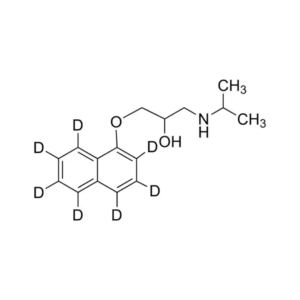Hydrogen Chloride (HCl) in Cyclopentyl Methyl Ether (CPME)
Hydrogen Chloride (HCl) in Cyclopentyl Methyl Ether (CPME) is a solution formed by dissolving gaseous hydrogen chloride in CPME, an organic ether commonly used as a solvent. This solution is highly effective in organic synthesis and is particularly useful in acid-catalyzed reactions such as alkylation, acylation, and esterification. The combination of HCl with CPME offers a non-aqueous solvent system that enhances reaction rates while minimizing side reactions.
Formula:
HCl in C₆H₁₂O
Synonyms of Hydrogen Chloride (HCl) in Cyclopentyl Methyl Ether (CPME):
- HCl in CPME
- Cyclopentyl Methyl Ether-HCl Solution
- Hydrochloric Acid in CPME
- HCl/CPME Solution
Characteristics of Hydrogen Chloride (HCl) in Cyclopentyl Methyl Ether (CPME):
- Physical State: Colorless, volatile liquid with a characteristic ether-like odor.
- Solubility: Fully miscible in organic solvents, especially ethers, but reacts with water to release HCl gas.
- Reactivity: Highly reactive in acid-catalyzed processes such as esterifications and hydrolysis.
- Boiling Point: CPME has a high boiling point, making it a stable solvent for reactions requiring elevated temperatures.
Applications of Hydrogen Chloride (HCl) in Cyclopentyl Methyl Ether (CPME):
Used to catalyze the formation of esters from alcohols and carboxylic acids.
Plays a key role in alkylation and acylation reactions in organic synthesis.
Employed in synthesizing active pharmaceutical ingredients (APIs) and intermediates.
Facilitates polymerization reactions and the synthesis of specialty polymers.
Benefits of Hydrogen Chloride (HCl) in Cyclopentyl Methyl Ether (CPME):
- High Efficiency: Accelerates reaction rates, reducing process time and enhancing yield.
- Non-Aqueous Solvent: CPME offers a hydrophobic, non-aqueous environment, preventing unwanted hydrolysis during reactions.
- Low Environmental Impact: CPME is considered a greener alternative to traditional solvents due to its low toxicity and biodegradability.
- Thermal Stability: CPME’s high boiling point provides stability for reactions conducted at elevated temperatures.
What are the Safety Considerations for 5-Bromo-2-Chlorobenzoic Acid


While generally regarded as safe for its intended uses, appropriate precautions should be taken when handling 5-bromo-2-chlorobenzoic acid:
Ensure proper ventilation to avoid inhalation of vapors.
Store in a cool, well-ventilated area away from heat sources and incompatible substances.
Use gloves, goggles, and protective clothing to prevent skin and eye contact.
Avoid contact with water to prevent HCl gas release, and handle with caution to avoid burns or irritation.
Hydrogen Chloride in Cyclopentyl Methyl Ether is a versatile and efficient reagent for organic synthesis, particularly in environments where a non-aqueous solvent system is required. When handled correctly, it offers significant advantages in chemical processes while maintaining a lower environmental impact.
We Provide Best in class service and on time delivery to fulfill the requirement of this product worldwide.


